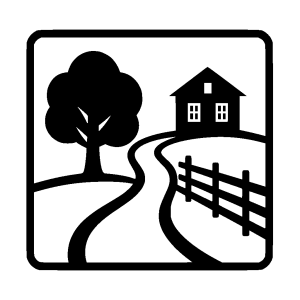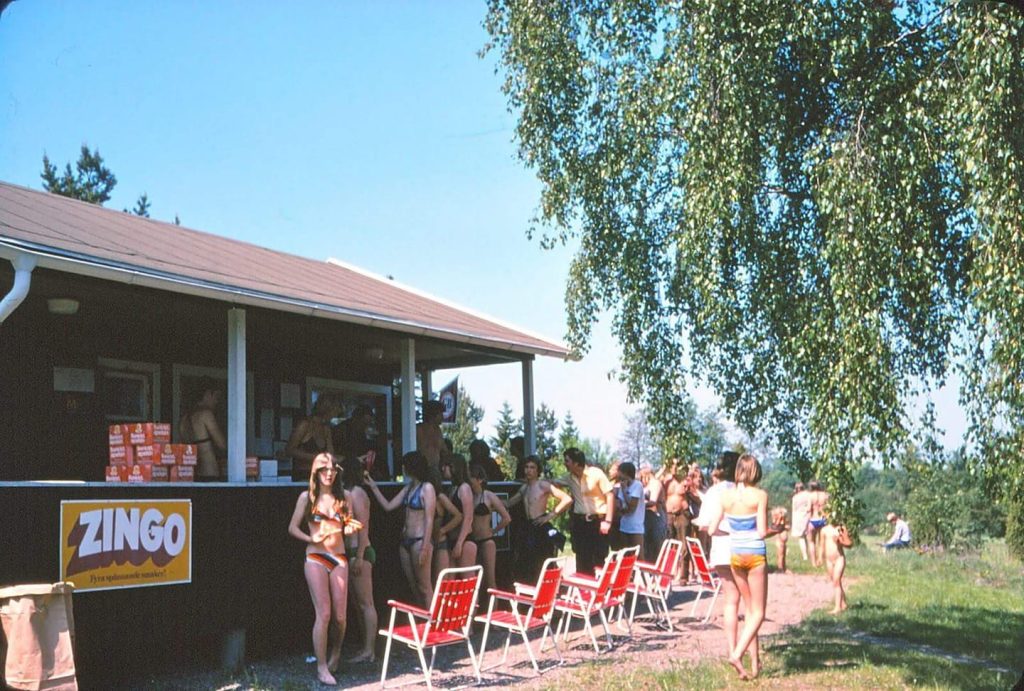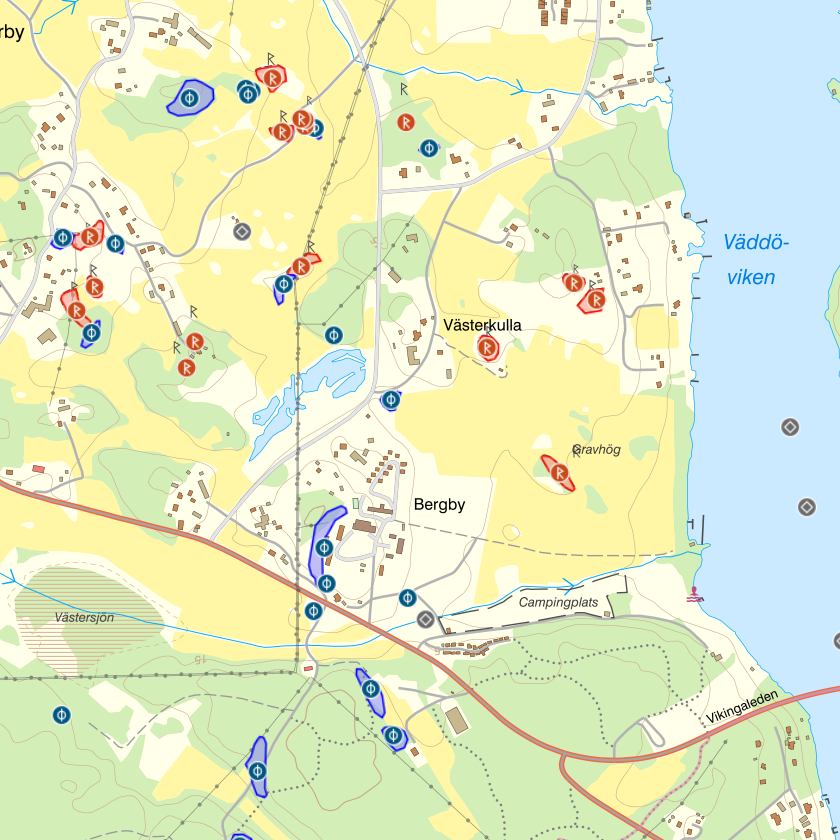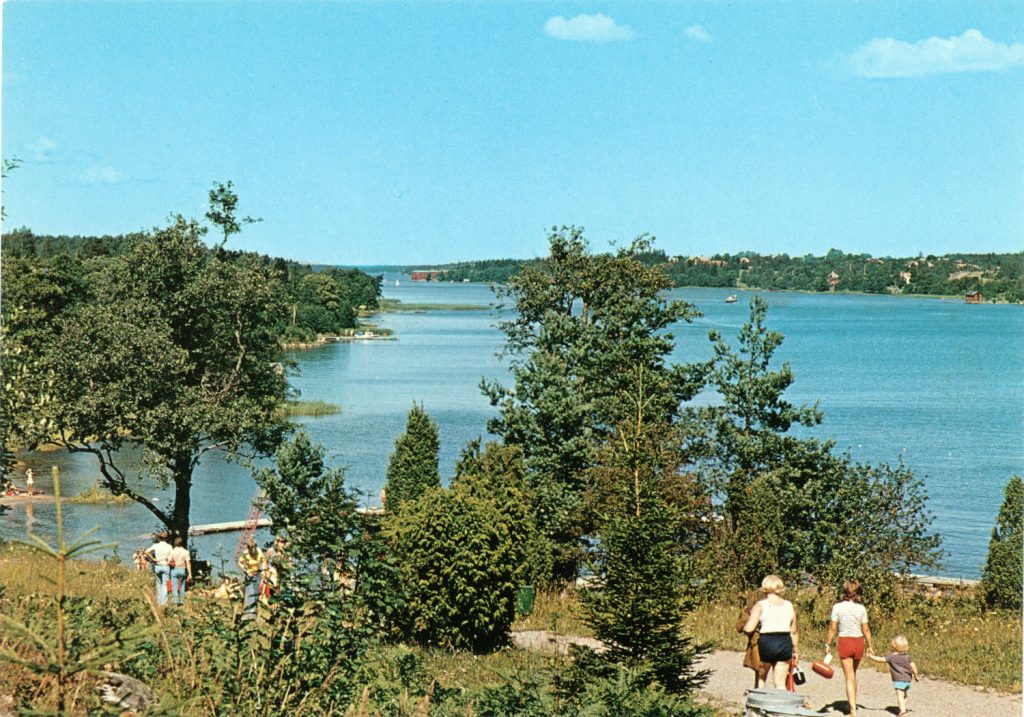
8. Bergbybadet
Bergbybadet, a swimming and camping site at Väddöviken, was built in 1964 by the then Häverö municipality. The purpose is said to be to give the children in Hallstavik the opportunity to swim in clean water. Edeboviken (The bay of Edeby on the west coast of Häverö parish) used to be very polluted. However, the villagers are critical of the choice of location – here the water is both cold and with a strong current! Previously, people swam in a small bay at Bergby pier (see sign no. 14). For many years, a municipal swimming school has been run at Bergbybadet, where many people in the village learn to swim. The campsite was previously well-visited but has been closed for a few years. It is facing a new start in 2026 with new owners. However, the camping cabins have been sold and converted into holiday homes (Brf Bergby).
The settlement in Bergby dates back a long time, probably from the Iron Age (500 BC – 1050 AD). During this period, the land rose, new lands and islands rose from the sea. People settled near the water, which served as the main means of communication. The shoreline was then 5–15 meters higher than today. The area bears abundant historical traces in the form of ancient remains. One example is the burial ground located on a field islet just north of this sign.
The archaeological site covers an area of approximately 100 x 20 meters and contains about fifteen smaller round stone mounds. One of the graves is unusually large, with a diameter of 14 meters and a height of 1.5 meters. Perhaps a chieftain’s grave?
The road down to the water was built when the new manor house was built at Bergby Gård around 1780. The road still exists and is one of the oldest in the area. Bergby Gård’s shipping yard was built by the water. Remains of the stone piers can still be seen in the water. Transports of butter and grain from the manor house often took place by sea. The boathouse by the water was probably built in the 19th century.


in the area from Fornsök.
Extra material

